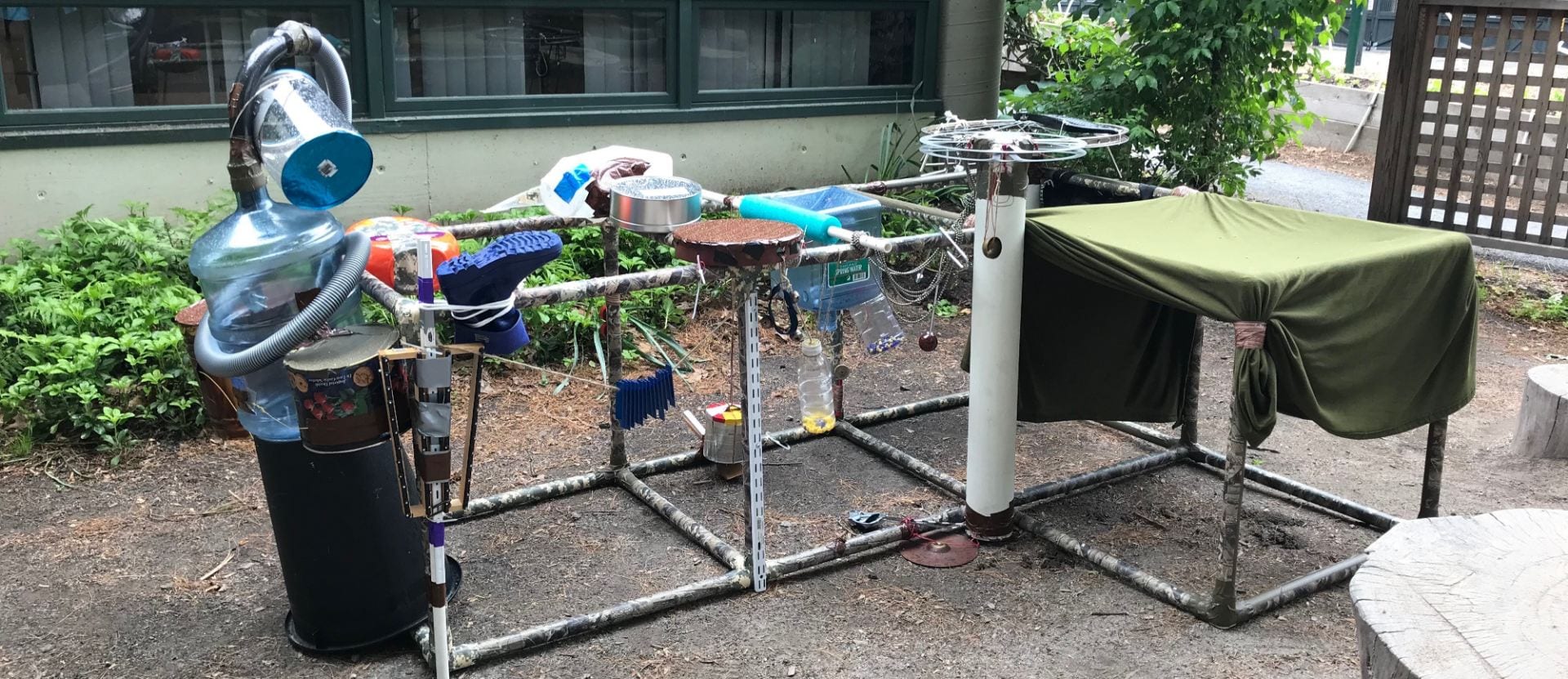
Once students have completed their EcoSonic Playgroud Project™ instrument structure, it becomes an ensemble instrument: To make it sound interesting, several people need to play it at the same time. When students build the final version of their instrument, it is theirs completely – it is owned collaboratively. The students have created something larger than the sum of its parts.
Playing it requires students to:
Without using these skills, the ESPP instrument sounds incoherent – like an ensemble full of individual players. The music happens through personal connection to other players and the sense that each player is important to the musical creation.
(This lesson may be given over one class or more depending on time constraints.)
Lesson Objectives: To introduce students to the ESPP ensemble instrument through free and structured improvisation.
Students will:
Materials:
The finished ESPP structure (of course) and some kind of recording device (can be phone, voice recorder, video recorder, etc.).
Lesson: Part 1 – Free Play:
Lesson: Part 2- Structured Play:
